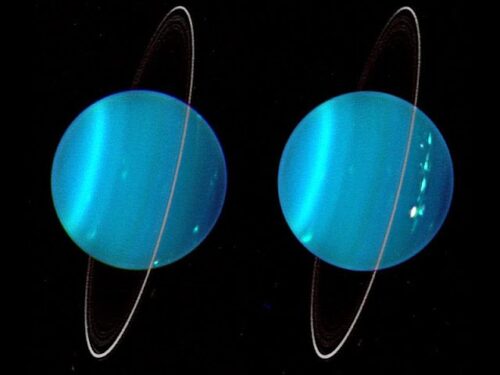
In a fascinating discovery, scientists found evidence of a colossal gas bubble, estimated to be 22,000 times larger than Earth, ejected by the enigmatic planet Uranus.
This awe-inspiring event occurred during a flyby by NASA’s Voyager 2 spacecraft in 1986. Although initially overlooked, recent analysis of archived data unveiled this remarkable phenomenon.
The findings, published in Geophysical Research Letters, have reignited scientific interest in Uranus and prompted investigations into the planet’s intriguing mysteries.
This article delves into the extraordinary gas bubble, its implications, and the ongoing scientific quest to unravel Uranus’s enigma.
During its encounter with Uranus, Voyager 2 serendipitously captured the momentous event—an expansive plume of gas surging from the planet’s southern hemisphere.
Stretching approximately 8,000 kilometers (5,000 miles) wide and extending 27,000 kilometers (17,000 miles) above Uranus’s surface, this colossal plume encompassed a staggering volume roughly 22,000 times that of Earth.
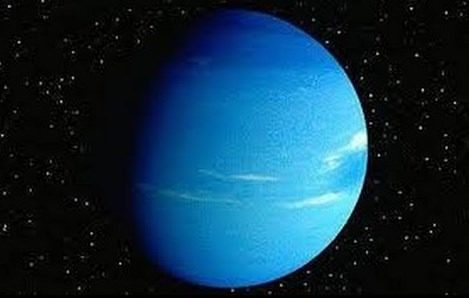
The discovery of this massive gas bubble holds considerable scientific significance.
The event provides valuable insights into the workings of Uranus’s atmosphere, a domain still shrouded in mystery.
The cause of such a colossal release of gases from the planet’s depths remains not fully understood, compelling scientists to further investigate Uranus’s unique characteristics.
Uranus presents an intriguing characteristic—a significant tilt in its rotational axis.
Unlike most planets in our solar system that exhibit a relatively upright axis, Uranus is tilted to such an extreme extent that its rotational axis practically lies in its orbital plane.
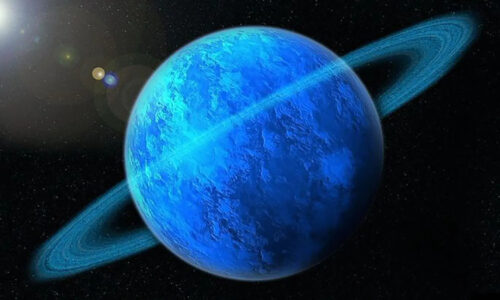
This peculiarity results in extreme seasonal variations, which may play a role in the formation of such extraordinary phenomena.
Despite the remarkable findings from Voyager 2’s flyby, numerous questions regarding Uranus’s gas bubble and its implications remain unanswered.
Scientists are actively studying the planet, utilizing data from past and ongoing missions, to unlock the secrets of this enigmatic giant.
Recent analysis of archived data, including a blip in Uranus’s magnetic field, suggests the presence of a magnetic bubble during the Voyager 2 flyby, further fueling scientific curiosity.
The newfound understanding of Uranus’s gas bubble has spurred planetary scientists to direct their attention toward the unanswered questions surrounding the planet.
Researchers aim to delve deeper into Uranus’s atmospheric dynamics, magnetic field interactions, and the mechanisms triggering such extraordinary gas releases.
The wealth of knowledge obtained from future missions, coupled with advancements in technology and analytical techniques, will undoubtedly provide further insights into Uranus’s secrets.
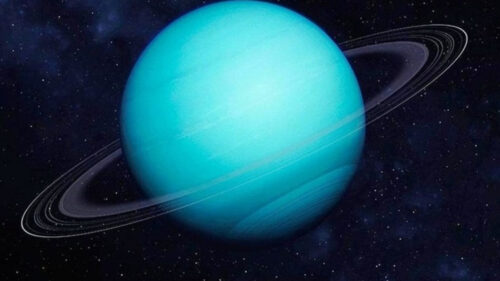
The discovery of a gas bubble 22,000 times larger than Earth ejected by Uranus showcases the immense and captivating nature of our solar system.
This astronomical event, captured by the Voyager 2 spacecraft during its 1986 flyby, sheds light on Uranus’s atmospheric mysteries and stimulates scientific investigations.
With ongoing research and upcoming missions, planetary scientists are on the brink of unraveling the enigma surrounding this tilted giant.
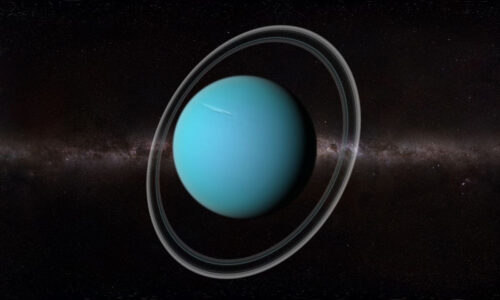
Exploring Uranus’s secrets will not only deepen our understanding of planetary processes but also broaden our knowledge of the vast cosmos that surrounds us.
